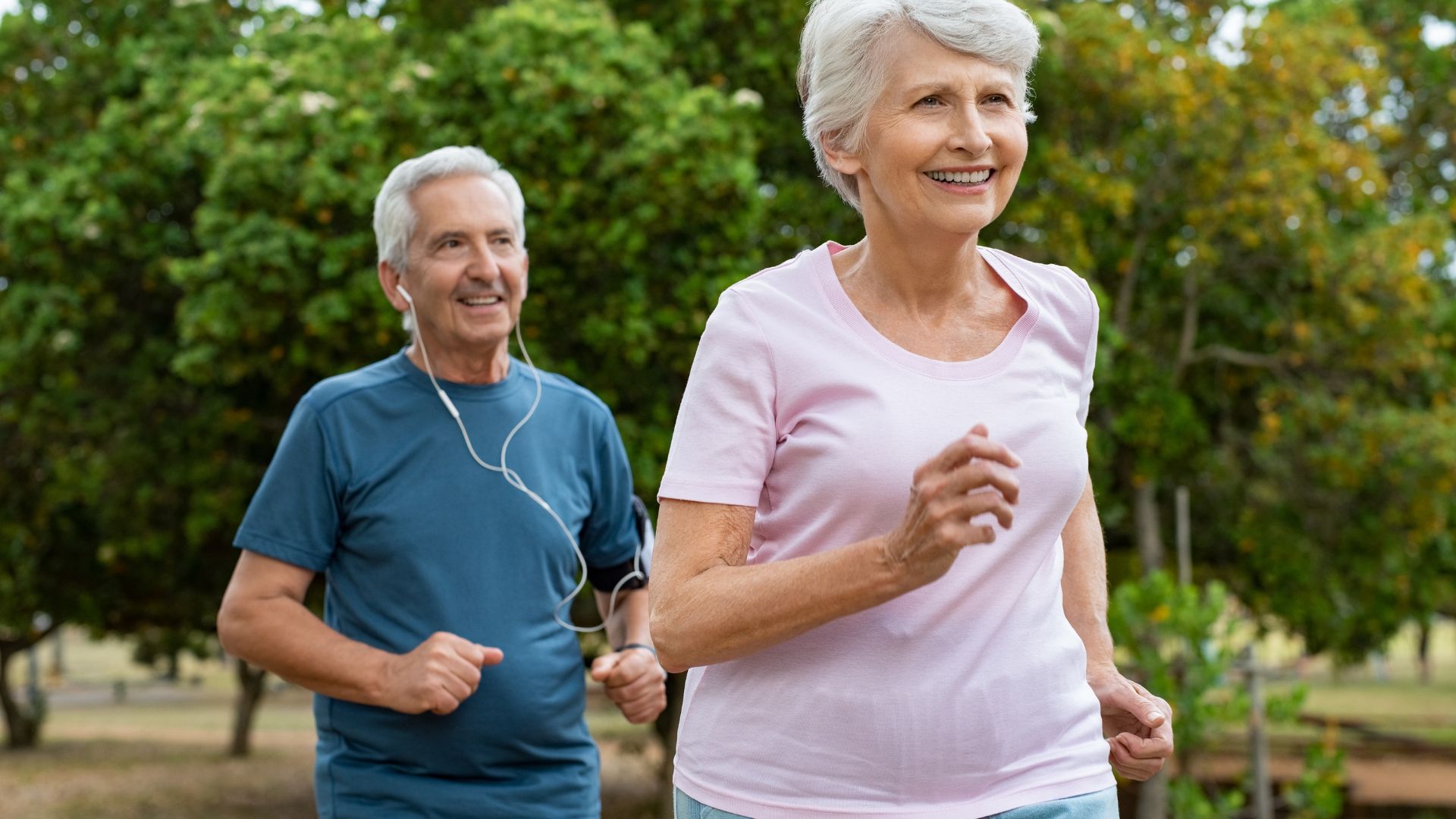How to Stay Active even in old age with these top Exercise Tips

.jpg)
How to Stay Active even in old age with these top Exercise Tips

Desmond Croker RN, Dip. OHS, BSN, MSN, CCDE
July 25 2023
We all know that exercise is good for us, but do we know how good it is, especially as we age? Exercise is not only beneficial for our physical health but also for our mental and emotional well-being. It can help us prevent or manage chronic diseases, improve our mood and memory, maintain our independence and mobility, and even extend our lifespan.
In this blog, we will explore the amazing benefits of exercise for ageing and how to start or maintain an active lifestyle that suits your needs and goals.

The Physical Benefits of Exercise for Aging
Exercise can help you keep and improve your strength, flexibility, balance, and endurance, which are essential for staying independent and preventing falls and injuries. Exercise can also help you manage your weight, blood pressure, cholesterol levels, and blood sugar levels, which can lower your risk of developing conditions such as heart disease, stroke, type 2 diabetes, osteoporosis, and some types of cancer.
According to the National Institute on Aging (NIA), older adults should aim to do at least 150 minutes of moderate-intensity aerobic activity (such as brisk walking, cycling, or swimming) per week, along with muscle-strengthening activities (such as lifting weights, resistance bands, or bodyweight exercises) at least twice a week.
They should also include balance exercises (such as standing on one leg and tai chi) and flexibility exercises (such as stretching or pilates) in their routine.
However, if you have an existing health condition or are just starting an exercise program, you should consult your healthcare provider before beginning. They can help you design a safe and effective exercise plan that meets your individual needs and preferences. You should also start slowly and gradually increase the intensity and duration of your workouts as you get fitter and more confident.

The Mental and Emotional Benefits of Exercise for Aging
Exercise can also boost your mood, self-esteem, sleep quality, and cognitive function. Exercise stimulates the release of endorphins, serotonin, dopamine, and other brain chemicals that can make you feel happier, more relaxed, and more alert. Exercise can also provide a sense of accomplishment, purpose, and social connection if you do it with others.
Exercise may also help protect your brain from age-related decline and dementia. Studies have shown that exercise can improve various aspects of cognitive function, such as attention, memory, executive function (planning and organizing), and processing speed. Exercise may also increase the size of the hippocampus, the brain region responsible for learning and memory. Exercise may also reduce inflammation and oxidative stress in the brain, which are linked to neurodegeneration.
To reap the mental benefits of exercise, you don’t have to do vigorous or long workouts. Even moderate or low-intensity activities can have positive effects on your brain health. The NIA recommends doing at least 10 minutes of aerobic activity at a time to improve blood flow to the brain. You can also try activities that challenge your brain in different ways, such as learning a new skill or sport, playing games or puzzles, or doing crosswords or sudoku.
.jpg)
How to Make Exercise Fun and Enjoyable
One of the biggest barriers to exercise is a lack of motivation or interest. If you find exercise boring or tedious, you are less likely to stick with it. That’s why it’s important to find activities that you enjoy and that suit your personality and lifestyle. Here are some tips to make exercise fun and enjoyable:
- Choose activities that match your interests and goals. For example, if you love nature, you can try hiking or gardening. If you want to socialize, you can join a group class or a club. If you want to relax, you can try meditation or yoga.
- Vary your routine. Doing the same thing every day can get boring and stale. Try to mix up your activities and challenge yourself in different ways. For example, you can alternate between cardio and strength training days. Or you can try different types of exercises within each category. For example, instead of always walking on a treadmill, you can try jogging outdoors or on a trail.
- Set realistic and specific goals. Having clear and attainable goals can help you stay motivated and track your progress. For example, instead of saying, “I want to be more active”, you can say “I want to walk for 30 minutes three times a week”. You can also use a fitness tracker or an app to monitor your steps, calories burned, distance covered, etc.
- Reward yourself. Celebrate your achievements and milestones with something that makes you happy. For example, you can treat yourself to a massage, a movie night, or a new outfit. Just make sure your rewards are not counterproductive to your health goals, such as binge eating or drinking.
- Have fun. Don’t take exercise too seriously or too hard on yourself. Remember that exercise is meant to enhance your life, not to stress you out or make you feel guilty. Enjoy the process and the benefits, and don’t be afraid to try new things or laugh at yourself.
Bottom Line
Exercise is one of the best things you can do for your health and well-being as you age. It can help you stay physically, mentally, and emotionally fit and happy. It can also help you prevent or manage many chronic diseases and improve your quality of life.
The key is to find activities that you enjoy and that suit your needs and goals and to do them regularly and safely. Remember, it’s never too late to start exercising, and every little bit counts.
So, what are you waiting for? Get up and get moving today!
Most Popular Articles
10 Stress-Reducing Foods You Should Be Eating Right Now
The Power of Prevention: The Benefits of Natural Supplements for Women's Heart Health
The Importance of Diabetes Education and Counseling for people with Diabetes and chronic diseases
The Untold Secrets to Optimal Health: Transform Your Lifestyle Everyday
Unlock Maximum HIIT Performance with these expert-recommended Supplements
Managing Stress: Simple and Natural Ways to Reduce Stress Levels and activate your superpower
6 simple tips for sticking with physical activity in diabetes management
The Benefits of Intermittent Fasting in Diabetes: A Closer Look, by a Diabetes Expert
Combatting age-related Cognitive Decline: Tips to Enhance Memory
The most overlooked risk factors for diabetes - By a Diabetes expert after 12 years of experience
Start your free trial
Sign up to get 10% off your next subscription
Most Popular Articles
10 Stress-Reducing Foods You Should Be Eating Right Now
The Power of Prevention: The Benefits of Natural Supplements for Women's Heart Health
The Importance of Diabetes Education and Counseling for people with Diabetes and chronic diseases
The Untold Secrets to Optimal Health: Transform Your Lifestyle Everyday
Unlock Maximum HIIT Performance with these expert-recommended Supplements
Managing Stress: Simple and Natural Ways to Reduce Stress Levels and activate your superpower
6 simple tips for sticking with physical activity in diabetes management
The Benefits of Intermittent Fasting in Diabetes: A Closer Look, by a Diabetes Expert
Combatting age-related Cognitive Decline: Tips to Enhance Memory
The most overlooked risk factors for diabetes - By a Diabetes expert after 12 years of experience
Recommended Posts
This site uses cookies. By using this site, you agree to our Privacy Policy and our Terms & Conditions
-480x320.jpg)
-3-480x320.jpg)

-480x320.jpg)
-1-480x320.jpg)
-480x320.jpg)
-2-480x320.jpg)
-480x320.jpg)
-480x320.jpg)
-1-480x320.jpg)